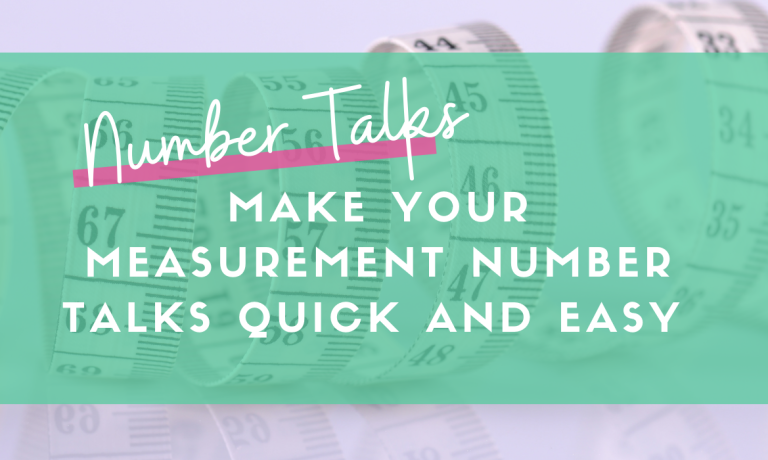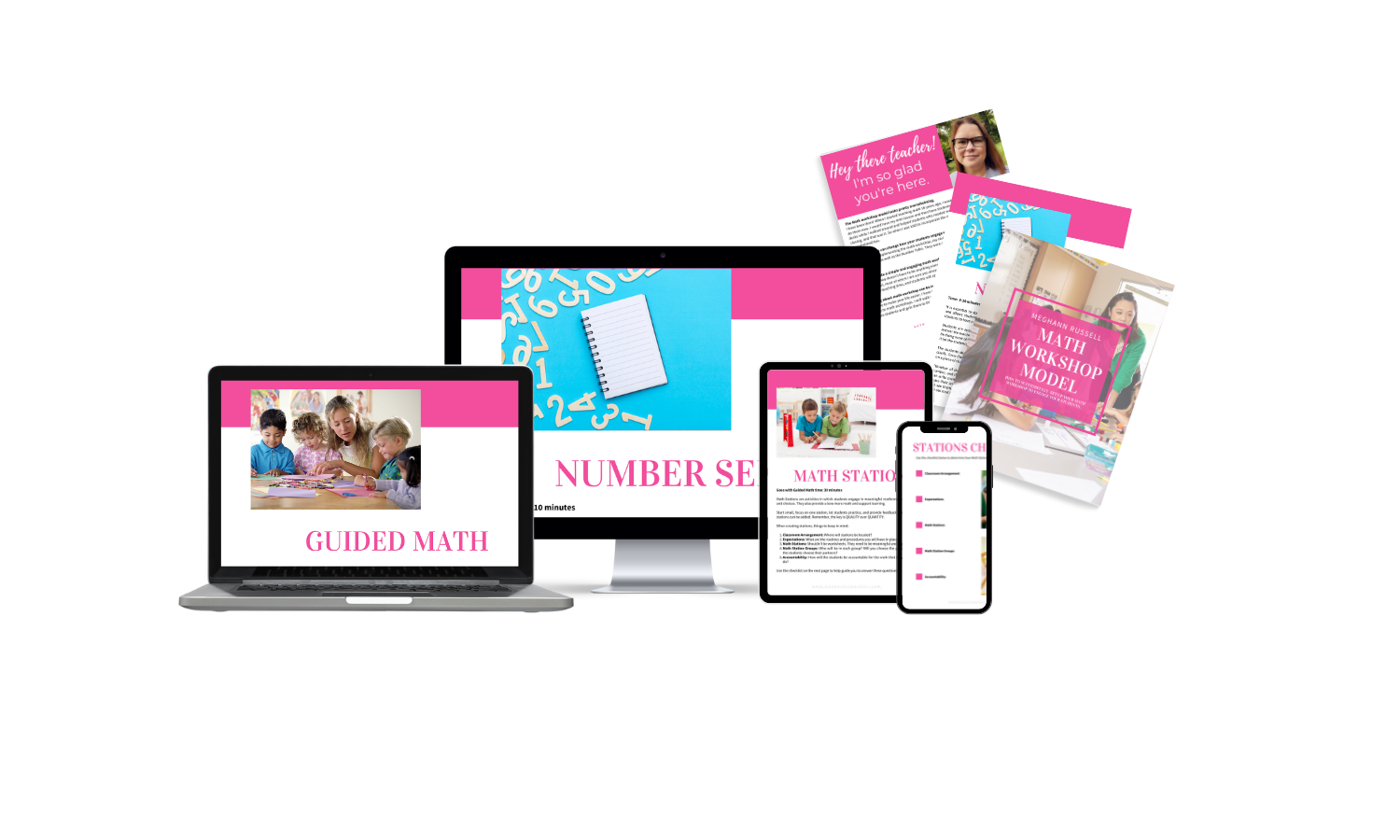What Are Number Talks?
When I first heard this term, I had been teaching for many years, and I wasn’t sure what it was or even if it would work in my classroom. Then a team in my building took the leap and immersed themselves in Number Talks and loved it, and I knew that it was something that I wanted to try. So I grabbed the Number Talks book by Sherry Parrish and started reading it. (You can get the book here)
Number Talks is a daily, short, structured way for students to talk to each other about solving math problems. These lessons take about 10 minutes, and it is an excellent way for students to build on their number sense using mental math and thinking flexibly. By flexibly, I mean understanding that there are many ways to solve a problem. Students are encouraged to think of several ways to answer a given problem.
Once they have thought of their answers, they share their thinking with the rest of the class. Number Talks is also structured to get students talking about how they solved problems. It relies heavily on students talking to each other and using peer teaching so frequently in our classrooms!

Number Talks Activities for Measurement
There are so many different activities that you can use with measurement regarding number talks. The goal is to get students’ brains warmed up and thinking about measurement in many different ways. They don’t just need to see which object is longer or shorter, heavier or lighter. They need to explain their thinking and learn how to share their thoughts through discourse. Measurement can still be used as a number talks lesson, and below I will share four quick and easy ideas you can use to get your students thinking.
True or False? for Number Talks
The first number talks you can do is True or False. You can do this in a variety of different ways. The first way is to have two physical objects in your hands and give the students a statement such as “The pencil is longer than the crayon.” The students will either give you a thumbs up or a thumbs down. Then they need to explain why they agree or disagree with your statement. Make sure you record their answers on the board, chart paper, or whatever you have available, so students can visualize what is being said by their peers. You can also use this strategy when it comes to object weights. Bring out a scale and place to objects in the scale and say, “The toy car is lighter than the feather.” Then again, the students will either give you a thumbs up or a thumbs down. Then they need to explain why they agree or disagree with your statement. Don’t forget to write down what the students are saying.

If you don’t have space or resources for physical objects in your room, you can also use pictures or clip art and present it in the same way by making a statement and asking the students if it is true or false. Either way works and can engage your students in measurement activities.
Comparing Using Measurement for Number Talks
The following number talks you can use is comparing measurements. This Number Talks again can be done with physical objects or with pictures. You can use the Notice and Wonder strategy with this activity.
The first thing you do is show your students the objects or the image. For example, offer two stacks of cubes for students to look at. These stacks get students thinking about the pile of cubes and how they can look at it mathematically. Show your students the stacks and ask them, “What do you notice or what do you wonder?”

Students will look at the stacks and could say:
- “I notice that there are ten cubes in one stack.”
- “ I wonder why there are ten cubes in one stack and 6 in the other?”
Now students may look at the stacks of cubes and say, “They have different colors.” You can say, “Yes, they do.” Then gently remind them that they are thinking with our mathematician hat.
Make sure to record your students’ answers on chart paper so that all of the other students can see examples of what was said. They can use this to strengthen their mathematical thinking skills.
Try this with your next number talks lesson. You will be amazed at what students will think and say.
What am I? for Number Talks
This is another excellent open-ended question for students to answer. Again, you can use physical objects in your classroom or have pictures for reference for your students. You then start by saying you are going to give them a riddle. Here are a few you can provide students with:
- “I am heavier than a penny but lighter than a table. What am I?”
- “I am longer than a cell phone but shorter than a dry erase board. What am I?”
Then you ask students to come up with answers that fit the parameters of the clues. You write these answers on the board and ask students to explain why these answers work with the riddle. They love playing this game and can come up with many different solutions!

Sorting Measurements for Number Talks
The last activity is all about sorting objects. Now, I am sure you covered this in your geometry unit, but you can also use sorting in your measurement unit as well! Simply have objects in a bin, for example, shorter and longer things and have students explain how they would sort their objects using their measurement skills. Again it is essential to make sure that you write these examples up on the board, chart, paper, or whatever you have available because students need a visual to see what their peers are thinking.
Number Talks for Measurement
There are so many different activities that you can use with measurement regarding number talks. The goal is to get students’ brains warmed up and thinking about measurement in many different ways. They don’t just need to see which object is longer or shorter, heavier or lighter. They need to explain their thinking and learn how to share their thoughts through discourse. Measurement can still be used as a number talks lesson using true or false, comparing objects using notice and wonder, what am I?, and sorting objects. You can use any of these easy activities to get your students thinking.
Comment below with your favorite activity to use in your classroom!
Related Articles
Notice and Wonder Activities That are Fun and Engaging
How to Use Number Talks in Your Classroom



